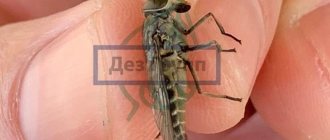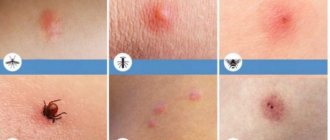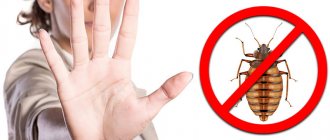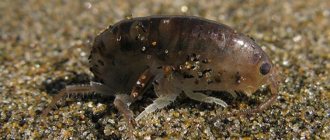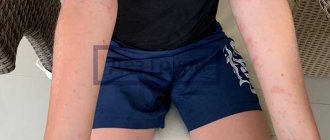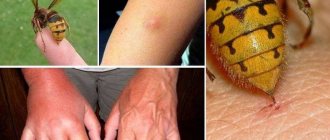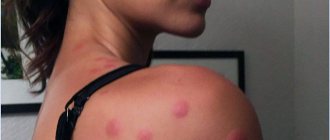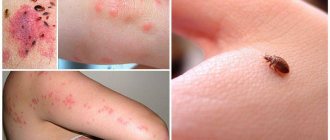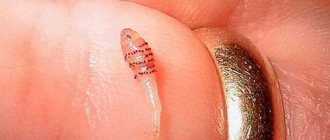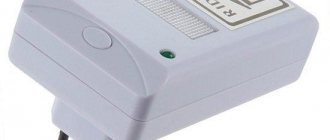Prevention on the street
While the child is small, it is easy to cover him with a mosquito cover right in the stroller. In some cases, it is convenient to use protective clothing or tents with mosquito nets. In all other situations, repellents become almost the only protective measure. Modern repellents typically use one of these two main active ingredients - DEET or picaridin.
DEET (diethyltoluamide) is the most commonly used broad-spectrum ingredient that is effective against mosquitoes, biting flies, fleas and ticks. In most cases, a repellent containing up to 10% DEET will prevent mosquito bites. In areas at high risk of insect-borne infections (where malaria, Ross River virus, Barmah Forest virus and Dengue fever occur), repellents with a DEET concentration of 15–30% should be used.
DEET can be safely applied to cotton, wool and nylon, but can damage spandex, rayon, acetate and leather clothing. DEET can dissolve plastics and vinyl (such as sunglass frames or watch bands).
Picaridin is a new repellent ingredient that is odorless and less sticky than DEET. May be more pleasant to use, does not dissolve plastic. Studies have shown that picaridin is as effective as DEET; however, its protection is less long-lasting and it will need to be applied more frequently. Products containing 10% picaridin will prevent insect bites in most situations.
Safety of using repellents in children
Before use, read the label, assess the level of DEET or picaridin in the product, and use the repellent only as directed by the manufacturer.
Follow simple rules:
- Choose roll-on medications over aerosols if you have a choice.
- Apply a moderate amount of the drug to exposed skin.
- Do not apply the drug to cuts, wounds or irritated skin.
- Do not apply to areas around the eyes or mouth (in case of accidental contact with eyes, rinse immediately with plenty of water!).
- Do not apply to the palms or fingers of small children.
- When you return home, wash the repellent off your skin with soap and water.
- Keep repellents out of the reach of children.
- If you need to apply both sunscreen and repellent, apply the sunscreen first. Products that combine sunscreen and repellent are not recommended by experts, as sunscreen usually needs to be reapplied, but repellent does not.
Physical methods of protection
Mosquitoes are attracted to dark colors, so you should wear light-colored clothing that covers your wrists and ankles to reduce the likelihood of being bitten. If you are planning to travel to high-risk areas, it is recommended that you obtain medical advice before traveling; you may need additional vaccinations against infections and/or drugs to prevent malaria.
Stagnant water attracts mosquitoes, so stay away from dams, ponds, swamps and other areas with standing water.
To prevent mosquitoes from breeding near your home:
- Cover all water containers (including swimming pools) to prevent mosquitoes from laying eggs there.
- Empty all water containers when not in use.
- Change the water in used containers at least once a week.
- Cover cesspools and septic tanks to prevent mosquitoes from laying eggs in them.
- Remove excess vegetation from garden ponds and stock the ponds with fish.
- Avoid overwatering your garden.
Consequences and complications
The consequences of a wasp sting, like the consequences of a hornet sting, are dangerous for those who are prone to allergies.
Swelling may develop in the affected area, which quickly increases. If your hand is swollen, this condition does not pose any particular danger. But when such a reaction develops, airway obstruction may occur in the larynx or oral cavity.
An allergic reaction can manifest itself in the form of anaphylactic shock, which is likely to result in death.
Other consequences and complications depend on where exactly the person was stung by the insect. glaucoma , iris atrophy, etc. may later develop
Prevention at home
The basis for protection against midges in the house are mosquito nets and fumigators. Attention! Remember that a mosquito net increases the risk of a child falling from a window, as it creates the illusion of a barrier - use window blockers.
Fumigators can work on plates or liquid, slowly spraying a substance toxic to insects around them. The substance most often used in fumigators is ethok (also known as prallethrin).
A common question for pediatricians is “my child found and chewed a fumigator plate, what does this mean for him?” The fumigator plate contains about 9 mg of prallethrin. The oral toxic dose of prallethrin for humans is 600 mg/kg (LD50). Thus, neither eating these plates nor inhaling fumes from a fumigator can usually cause serious harm to a child, but getting repellents and chemicals for fumigators into the mouth and mucous membranes should still be avoided.
You can read more about the use of repellents and fumigators on the Rospotrebnadzor website.
Spider Information
Karakurt (Latrodectus tredecimguttatus) has a more common name in everyday life - black widow. He received this nickname for the color of the females (there are 13 black dots on the bright red body, the rest of the parts are completely black), which are extremely poisonous.
Natural distribution area: Mediterranean and Black Sea coasts, steppes of Ukraine, Crimea, Caucasus, Central Asia, southern and middle regions of the Russian Federation. Spiders are up to 2 cm in size, males are three times smaller than females.
Most often, representatives of the genus can be found on the steppe plain, among stones, in grass, in mown fields, meadows, along the banks and on various slopes. Karakurts often live among wormwood.
The female makes a nest in empty holes or hollows, under stones and various shelters. You can notice it by the chaotic trapping web, which gathers in a denser lump (an example is shown in the photo). There is a dwelling in this place.
Karakurt - steppe widow (Latrodectus tredecimguttatus)
Most often, bites are recorded in hot weather. The number of females by this time becomes larger, they begin to migrate to establish new nesting sites.
The fertility of spiders is high; in some places there can be up to ten nests per square meter. Most often, karakurt attacks occur during agricultural work in the field or overnight in nature.
The invertebrate itself is quite delicate and can be easily injured or crushed, which is what usually happens. But if you press a female karakurt and she manages to hit the skin with her mandibles, then you should expect very unpleasant consequences.
The animal never attacks first. Bites most often occur due to human inattention when insects crawl into clothing. It is not uncommon to find a spider in haylofts, outbuildings and other premises in rural areas.
Note. Female karakurt pose a danger to humans and animals. Males are small and cannot bite through the skin.
Treatment of insect bites
Many children (and some adults) have pronounced local reactions to the bites of midges (mosquitoes, midges, horseflies): immediately after the bite, a urticarial element forms around it within a radius of 1–3 cm (as in urticaria, intradermal edema), lasts for several hours and itches intensely. Then it turns into a papule, which is smaller in size but more persistent. On top of this papule there are often scratches and bloody or serous crusts. The papule usually goes away within a few days, but the crusts can remain for a very long time - if a person scratches them with his nails several times a day, rips them off, and they form again. The use of external or systemic medications after insect bites reduces the likelihood of serious scratching, secondary infection, reduces unpleasant symptoms (itching, swelling at the bite site, burning and hyperemia) and speeds up recovery. This is especially important for children, who are prone to more violent local reactions and are much less able to restrain the urge to scratch the bite site until a bloody scab appears.
Immediately after the bite
As soon as you find urticarial marks on your child’s skin from fresh bites (you came home from the street or picked up a woken up baby in your arms), apply a cooling antipruritic mash (Calamin or Tsindol) to the bite sites. Repeat application once an hour on this day, most likely in a day you will hardly be able to find the bite site (all changes on the skin will disappear).
If the urticarial element nevertheless turns into a papule or crust
If you did not apply the mash, or did, but a papule still forms and itches, start applying a low-potency steroid cream (hydrocortisone eye ointment, Sinaflan or Afloderm) to the area. The steroid is applied 1–2 times a day; a volume of ointment of no more than half a grain of rice is required for one element of the rash. The course usually takes 2–4 days, during which time the element will almost completely disappear. For severe itching or local swelling, you can use a second-generation antihistamine, such as Zodak (as directed) for several days in a row.
If a midge has bitten near the eye or on the lip, and swelling of frightening proportions has developed
In this case, the child’s eyes may stop opening, and problems with pronouncing words may appear (a swollen lip makes it difficult to speak clearly). Most often, it is enough to just wait, or apply cold and wait - and after 15-30 minutes such local swelling begins to subside, and after an hour it disappears completely. In severe cases, or if you want to speed up recovery, you can (in addition to cold) use an antihistamine internally and a local steroid externally.
If bitten by a Hymenoptera (wasp, bee, bumblebee, hornet, etc.)
The bite or sting of Hymenoptera is much more unpleasant and dangerous than the bites of ordinary midges. They cause severe pain, a strong local reaction (redness, itching, swelling) and take much longer to resolve. With multiple bites, in addition to local reactions, there may be severe systemic reactions (malaise, fever, weakness, loss of appetite), which disappear within a few days. Additionally, some people are allergic to Hymenoptera venom and may develop anaphylactic reactions and even die from such stings. Help for single bites in the absence of anaphylaxis (fainting or semi-fainting, a pronounced change in general well-being) is generally no different from help for a midge bite, but the effect will have to wait much longer. If severe systemic reactions occur, you must immediately consult a doctor, and if anaphylaxis and/or Quincke's edema occurs in the larynx (hoarseness and severe difficulty breathing), call an ambulance immediately. For a person who has experienced anaphylaxis at least once in their life, the doctor will write a prescription for epinephrine (ideally an epinephrine pen) and teach him and his loved ones how to use this drug while waiting for an ambulance.
Important: when stung by a bee, you need to remove the sting from the wound as quickly as possible; assistance begins with this step.
A common complication of insect bites: papular urticaria
Papular urticaria is a rash that occurs in response to insect bites in places where the insect has not bitten; this is a “slow allergy” to bites. Most often it occurs in response to bites from fleas (including fleas), ticks and scabies, but a simple gnat can also lead to it. Papular urticaria is not dangerous, but can be uncomfortable, itchy, cosmetically unsightly and last for several months. It will go away on its own sooner or later, but a long course of antihistamines and sometimes local treatment can be useful to relieve symptoms and speed up recovery. You can read more here.
General Tips
Try not to let your child scratch the bite area, especially the eyes. This gives immediate relief, but leads to scratching, infection, and significantly lengthens the recovery time.
Author:
Butriy Sergey Alexandrovich pediatrician
General information
Wasps are insects that can be found in different places - both in villages and cities.
There are several varieties of these insects. However, the reaction to their bite is the same: it is very painful and unpleasant, since the venom of all types of wasps acts in a similar way. The ICD-10 code is W57 (bite or stinging by non-venomous insects and other non-venomous arthropods). But in some cases, a wasp or hornet is a particularly dangerous insect. After all, when talking about how dangerous a wasp sting is for a person, it should be taken into account that it can provoke a very acute allergic reaction . Therefore, it is most dangerous for those who are prone to allergies . Multiple bites are especially dangerous. Therefore, it is very important to know how to act correctly if a person is bitten by an insect, and what to do if an allergic reaction occurs. This will be discussed in the article.
Killing fleas with insecticides
Local control of insects is an ineffective method of exterminating them. First you need to find the source of the parasites. will sanitize the premises and 100% destroy all harmful insects. In our work we use certified equipment and effective chemicals that are safe for animals and humans.
If you have a pet living in your house, it also needs to be treated. You can use drops, shampoo, spray or gel. Don’t forget about the bedding (the animal’s habitat), carpets, and upholstered furniture. Thoroughly clean the room every 2 weeks, paying attention to corners and crevices. They must be treated with special means. Don't rule out car interior treatment. When killing fleas, use only professional insecticides that have already shown high effectiveness in controlling parasites. To prevent a new invasion of the premises, keep wormwood with inflorescences at home or periodically wipe all surfaces with a damp cloth soaked in tansy infusion.
Bitten by a midge: what to do
If you are bitten by a midge, the first thing you need to do is disinfect the wound. Depending on what you have on hand, the following may be suitable for this purpose:
- Miramistin
- Chlorhexidine
- Hydrogen peroxide
- Iodine
- Boric alcohol
- Vodka
Alcohol-containing products disinfect, but burn the skin.
Because of this, wounds may take longer to heal and leave scars. Miramistin, chlorhexidine and peroxide act painlessly, are more delicate and at the same time no less effective. In order to soothe the itching and burning for a while, until you get a special ointment for insect bites, you can:
- Wipe the area around the bite with ice wrapped in a piece of cloth.
- Apply frozen food or something cold to the bite, covered with gauze or a piece of cotton pad.
- Apply baking soda to wet skin around the bite.
- Apply fragrance-free hand cream or chapstick to the skin around the bite.
Nothing should come into direct contact with the wound, and any compositions should be applied only to the skin around the bite, and not to the bite itself.
After you disinfect the wound in one way or another, monitor the reaction and take appropriate measures as necessary. Further actions already relate to the treatment of the bite and are described in the section below.
